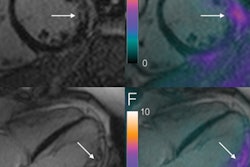Dear AuntMinnieEurope Member,
Dr. Josef Vymazal, PhD, doesn't shy away from challenges. He made the drastic career switch from radiology to front-line politics, working as the deputy minister of health in the Czech Republic for two years.
Thankfully, he survived to tell the tale, and now he speaks openly and honestly about the experience. What lessons did he learn? What advice does he have for anybody considering a similar change of career? Find out here.
Meanwhile, German researchers have made effective use of artificial intelligence (AI) technology to develop an automated volumetry method for contrast-enhanced MRI examinations of the liver. In testing, the convolutional neural network yielded a high level of performance and demonstrated the potential for significant time savings over manual segmentation. Go to our Imaging Informatics Community, or click here.
The use of PET/MRI to diagnose and assess a variety of conditions and diseases is expanding. The latest example comes from the U.K., where researchers are using late gadolinium enhancement and FDG uptake as the key indicators to help shed light on suspected cases of cardiac sarcoidosis, particularly for patients who are at greatest risk of death, arrhythmia, and heart failure. Go to the Molecular Imaging Community, or click here.
In other hybrid imaging news, an international group is reporting continued progress with its plan to develop a total-body PET/CT scanner designed to image patients in less than one minute. The key component of the work-in-progress Explorer is the half-million PET detectors that line the entire PET camera bore. Get the full story here.
The European ultrasound market looks set for a slight upturn this year, particularly for point-of-care machines. The growth prospects are especially healthy in Russia. To get an overview from industry analyst Simon Harris, click here.



















